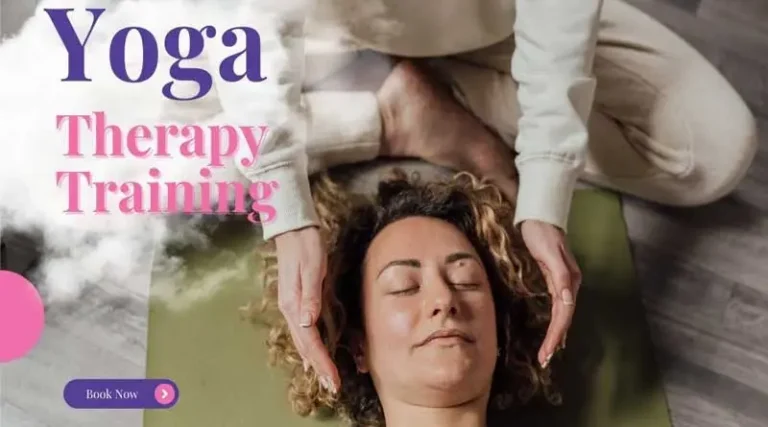
surya bhedana pranayama images
Becoming a yoga teacher instructor involves varying time commitments influenced by the type of certification, the format of training, and your individual aspirations.
Is Certification Necessary to become a yoga teacher
If you want to pursue a career in yoga, start your training now. It’s best to have a few years of yoga practice and a good grasp of techniques before you begin. To become a yoga instructor, you must get certified from a recognized school that trains teachers. You can teach without certification, but it will be hard to find a job, get insurance, secure funding for a studio, or attract students. Earning certification from a respected institution allows you to call yourself a Certified Yoga Teacher (CYT), showing your skills and knowledge.
Here’s a comprehensive overview divided into key sections:
1. Become a yoga teacher – Choose Yoga Teacher Training (YTT) Program Types
The first step toward becoming a yoga teacher is enrolling in a YTT program. Below are common levels of YTT and their estimated durations:
a) 200-Hour Yoga Teacher Training
– Duration: 3 to 6 months (part-time) or 3 to 4 weeks (intensive).
– Objective: This foundational certification encompasses essential asanas, anatomy, teaching methods, and the philosophy of yoga.
– Target Audience: Ideal for novices or those initiating their teaching careers.
b) 300-Hour Yoga Teacher Training
– Duration: 3 to 6 months (part-time) or 4 to 6 weeks (intensive).
– Objective: An advanced certification that expands upon the 200-hour course, delving into detailed anatomy, complex poses, therapeutic practices, and specialized techniques.
– Target Audience: Designed for current instructors aiming to enhance their expertise.
c) 500-Hour Yoga Teacher Training
– Duration: 8 week to 10 week (part-time) or 2 months (intensive).
– Objective: An extensive program that integrates both the 200-hour and 300-hour courses, facilitating thorough mastery of yoga.
– Target Audience: Suitable for individuals dedicated to achieving expert-level instruction.
2- Become a yoga teacher – Factors Affecting Training Duration
a) Training Format
– Intensive Programs: These are condensed courses requiring full-time engagement over a few weeks.
– Part-Time Programs: These offer flexible sessions stretched over several months, catering to those with other commitments.
b) Yoga Style and School
Different yoga schools or styles may necessitate varying hours of practice and study. For instance:
– Hatha Yoga: Often requires more time due to its emphasis on technique and alignment.
– Ashtanga Yoga: Typically demands additional time to master its sequences.
– Yin or Restorative Yoga: Focuses on subtle elements, thus requiring more study time.
c) Hands-On Experience
Many training programs prioritize teaching practicums, workshops, and experiential learning, which can lengthen the training duration.
d) Personal Dedication
Your advancement hinges on the amount of time you invest in practice, study, and assimilating the teachings.
3- Become a yoga teacher – Next Steps After Training
a) Certification
Upon finishing a YTT program, many instructors pursue certification from organizations like Yoga Alliance. Registering as a Registered Yoga Teacher (RYT) involves providing proof of completed training and may take a few weeks for approval.
b) Teaching Practice
Before diving into full-time teaching, many spend several months gaining experience through free or community classes.
c) Ongoing Education
To retain certification, yoga teachers often engage in workshops or specialized courses, which can require additional time.
4- Typical Timelines for Teacher Qualification
– Accelerated Path:
– Time Required: 3 to 4 months.
– Process: Complete a 200-hour intensive course and begin teaching beginner classes right away.
– Standard Path:
– Time Required: 6 to 12 months.
– Process: Finish a part-time 200-hour course, followed by additional months of practice and preparation for teaching.
– Advanced Path:
– Time Required: 1 to 2 years.
– Process: Complete a 500-hour YTT program or combine both 200-hour and 300-hour courses while gaining experience through teaching and workshops.
5- Time Commitment Beyond Certification
a) Personal Practice
Establishing a consistent personal practice is vital and may take months or even years based on your initial skill level.
b) Technique Mastery
Certain asanas and meditation methods may require years to master, particularly in advanced disciplines such as Ashtanga or Iyengar Yoga.
c) Lifelong Learning
Teaching yoga is an ongoing journey; many instructors dedicate years to refining their abilities by attending advanced workshops and keeping up with new practices.
5- Strategies for Accelerating Your Progress
– Select the Right Program: Choose intensive courses if you prefer a shorter timeline.
– Immerse Yourself: Commit full-time to studying and practicing during your training.
– Start Teaching Early: Begin offering classes soon after completing your course to gain confidence and experience.
– Seek Mentorship: Collaborate with seasoned yoga instructors for valuable insights and guidance.
– Specialize: Concentrating on a particular style can
How to become a kundalini yoga teacher
Embarking on the journey to become a Kundalini Yoga instructor requires commitment, appropriate training, and a solid personal practice. Here’s a detailed roadmap to guide you:
Explore the Essence of Kundalini Yoga
Begin by immersing yourself in the world of Kundalini Yoga, which integrates movement, meditation, breathwork, and chanting to activate inner energy. Participate in classes or workshops to fully appreciate its distinctive elements.
Establish a Personal Practice
Cultivate a regular personal practice to enhance your comprehension of Kundalini Yoga and to prepare for the dedication necessary for teaching.
Select an Accredited Training Program
Find and enroll in a Arogya Yoga School Kundalini Yoga Teacher Training course that is certified by either Yoga Alliance or the Kundalini Research Institute (KRI). These programs usually offer foundational 200-hour courses, with some providing advanced 300-hour certifications as well.
Complete Your Training
Throughout the training, you will delve into various topics including yoga philosophy, asanas (postures), kriyas (sets of exercises), pranayama (breathing techniques), mantras, and meditation. Additionally, you will learn about teaching methods and human anatomy.
Gain Teaching Experience
Build your confidence by instructing fellow trainees during your course. Leading practice classes will help you refine your teaching approach and connect with students effectively.
Achieve Certification
Upon successful completion of your training, you will earn a certificate. To widen your professional opportunities, consider registering with Yoga Alliance as a Registered Yoga Teacher (RYT).
Expand Your Knowledge Base
Participate in workshops, retreats, and advanced classes to further develop your expertise. The journey of learning within Kundalini Yoga is ongoing and enriching.
Create a Supportive Community
Begin offering classes, organizing workshops, or partnering with local yoga studios. By sharing your experiences and connecting with students, you’ll cultivate trust and broaden your outreach.
Incorporate the Lifestyle
Embrace the teachings of Kundalini Yoga in your everyday life. Your authenticity and commitment will resonate with your students and inspire them.
By following these steps, you can effectively share the transformative benefits of Kundalini Yoga with others.




